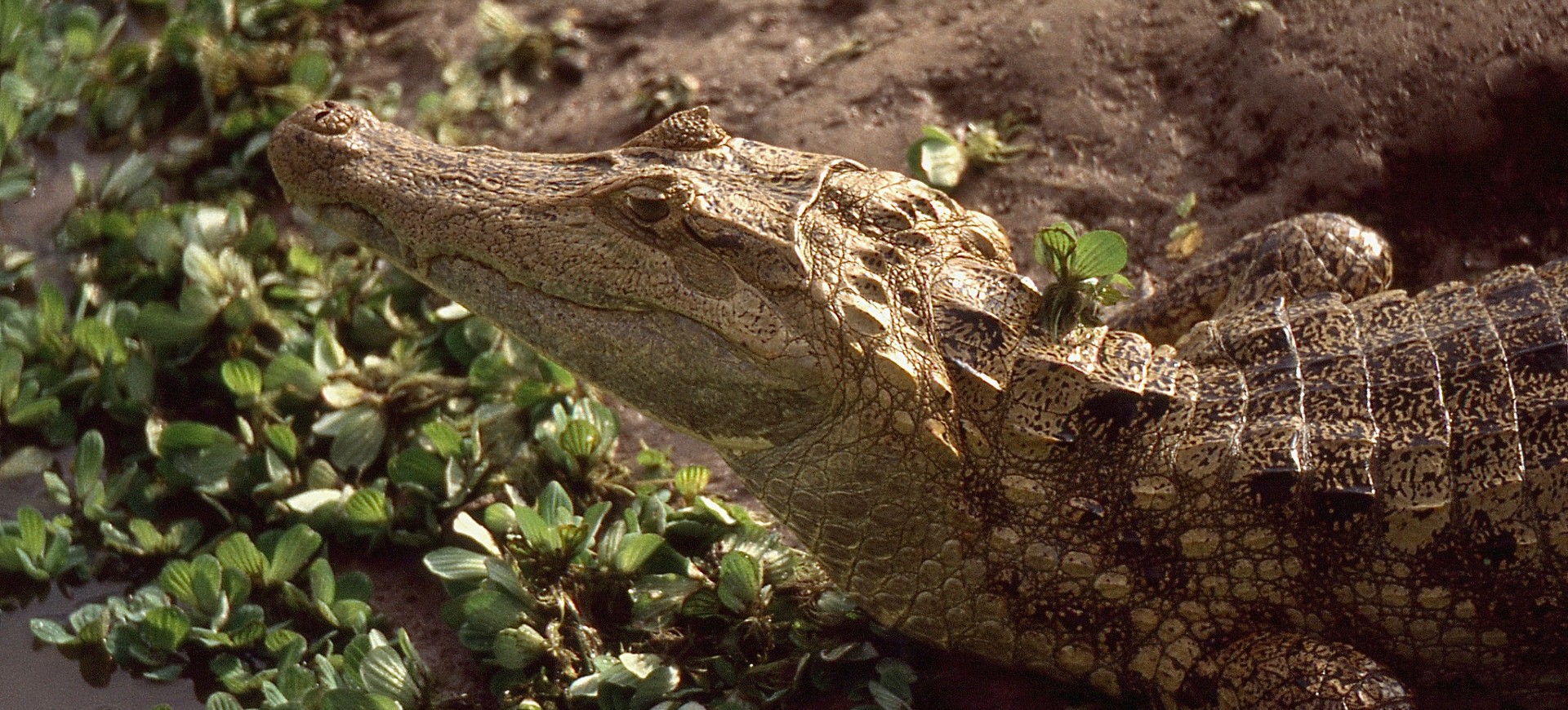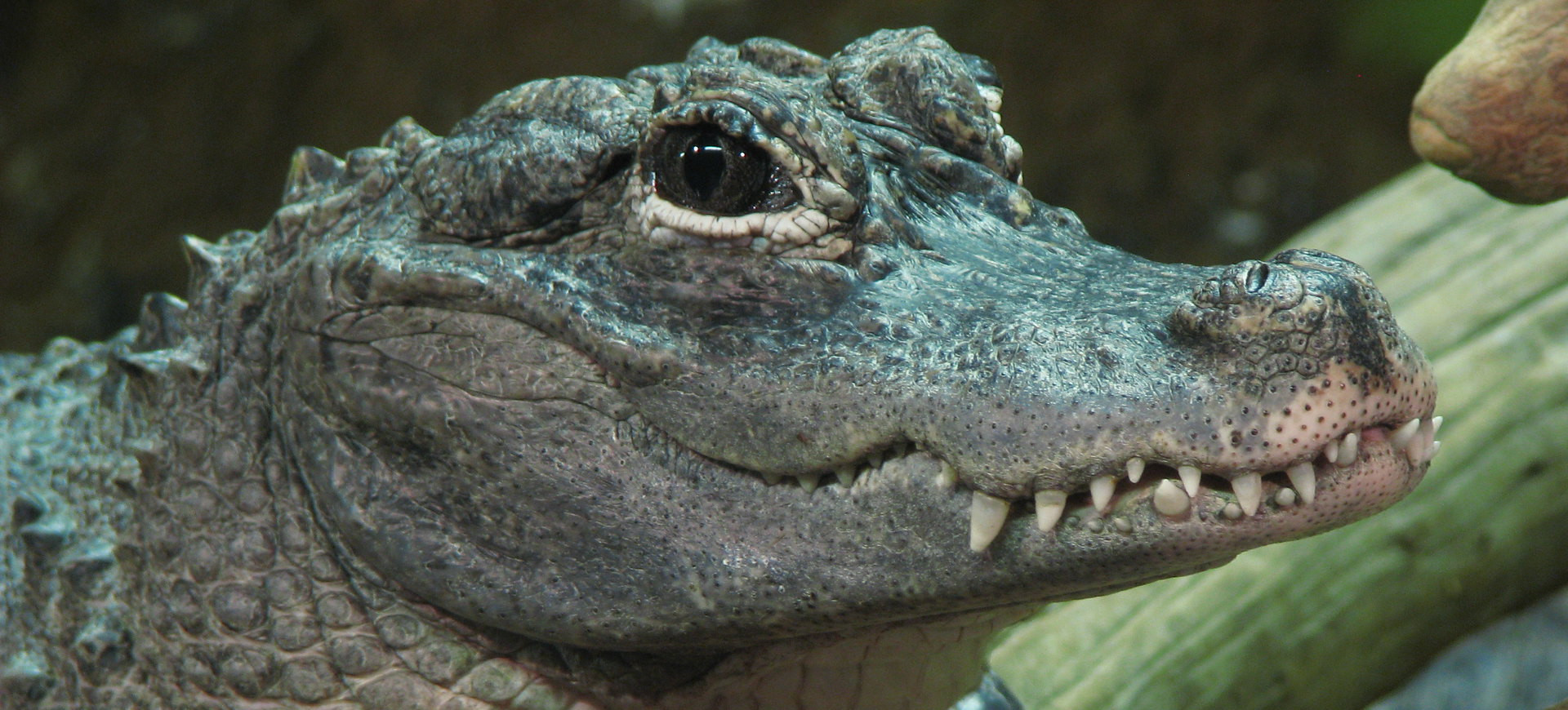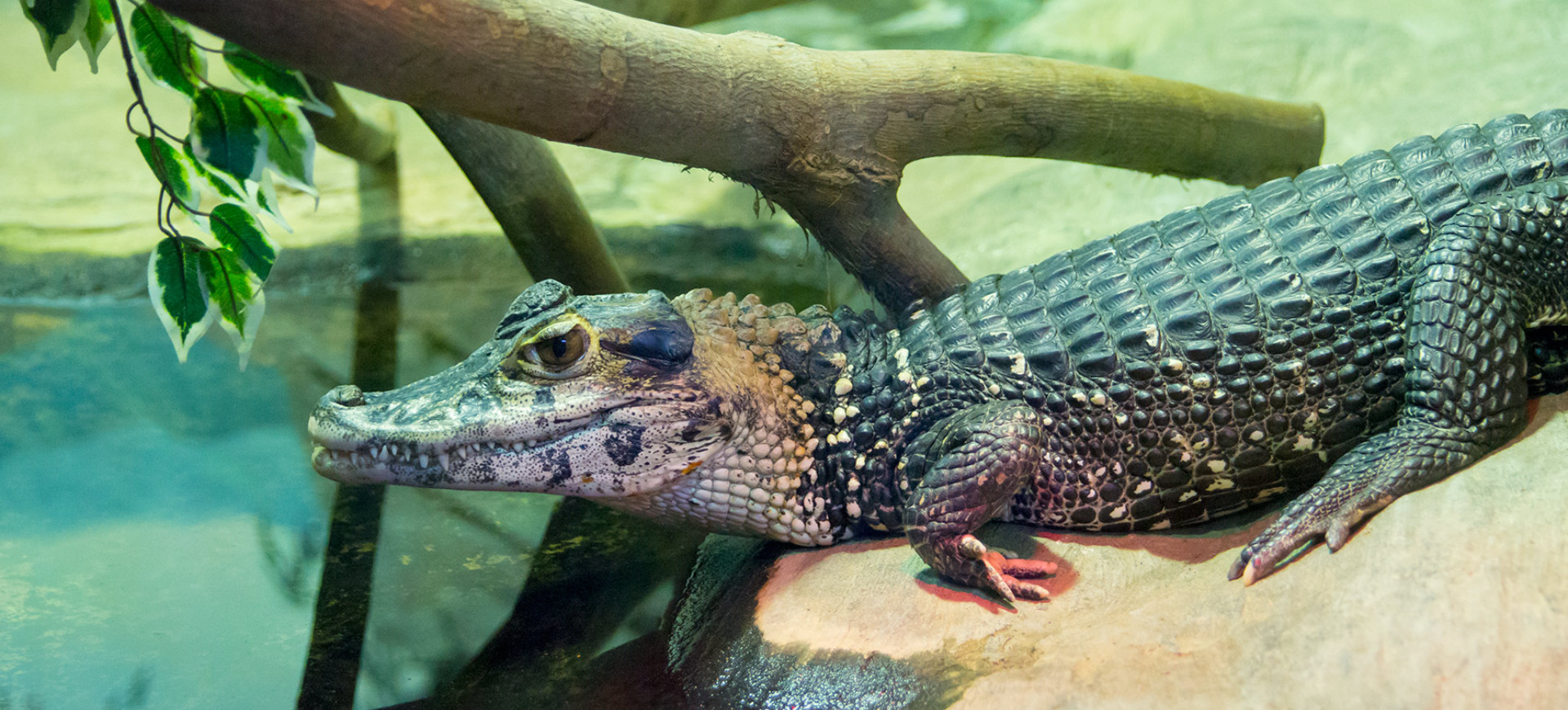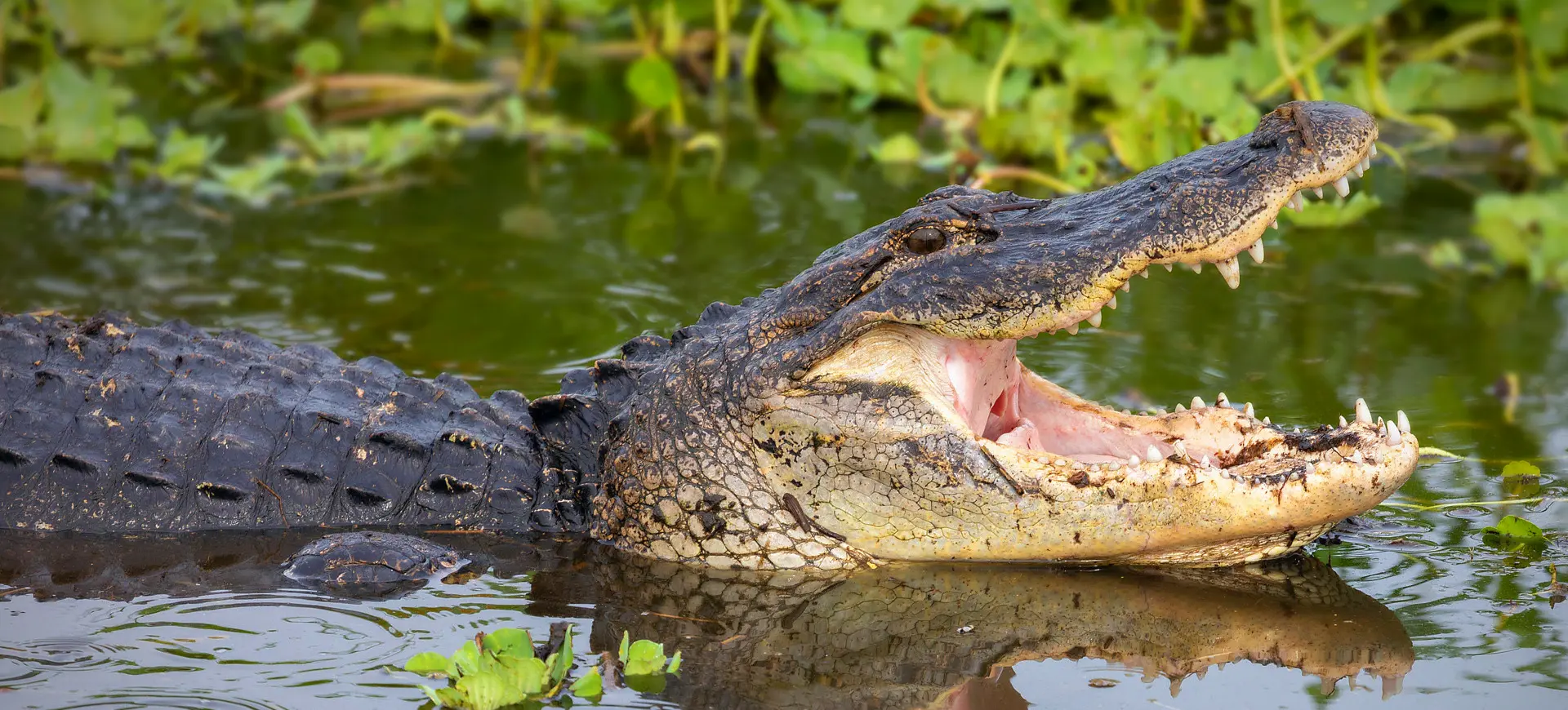Overview
Cuvier’s Dwarf Caiman, scientifically known as Paleosuchus palpebrosus, is one of the smallest members of the crocodilian family. This species is characterized by its distinctive armor-like scales and robust body. It inhabits freshwater environments, displaying remarkable adaptability in various aquatic settings. Despite their small size compared to other crocodilians, Cuvier’s Dwarf Caimans play a significant role in their ecosystem as apex predators.
These caimans exhibit a unique coloration, typically a dark, olive-green hue, aiding in camouflage in murky waters. They possess powerful jaws and sharp teeth, essential for capturing prey. Notably, they have a more pronounced bony ridge around their eyes than other caimans. Their small size and specific habitat preferences have made them a subject of interest in herpetology.
Cuvier’s Dwarf Caimans are primarily nocturnal, engaging in hunting activities during the night. They feed on various aquatic and terrestrial animals, demonstrating a versatile diet. These caimans are also known for their solitary nature, except during mating seasons. Despite their solitary behavior, they exhibit territorial tendencies, marking and defending their chosen habitats.
Taxonomy
Kingdom
Phylum
Class
Order
Family
Genus
Species
Type
Physical Description:
The Cuvier’s Dwarf Caiman is distinguishable by its small, robust body and armored scales. They have a distinctive cranial structure with a narrow, elongated snout. This morphology is adapted for their carnivorous diet. Their body coloration ranges from dark olive to brown, which provides excellent camouflage in their natural habitat.
Their eyes are positioned on top of their head, allowing them to see above water while remaining submerged. This adaptation is crucial for both hunting and avoiding predators. Their limbs are short but muscular, aiding in powerful swimming. Despite their small size, they are agile predators, capable of quick movements both in water and on land.

Lifespan: Wild: ~40 Years || Captivity: ~50 Years

Weight: Male: 13-15 lbs (5.9-6.8 kg) || Female: 11-13 lbs (5-5.9 kg)

Length: Male: 40-59 inches (101.6-150 cm) || Female: 36-50 inches (91.4-127 cm)

Top Speed: 12 mph (19 km/h)
Characteristic:
Native Habitat:
Cuvier’s Dwarf Caiman is native to the freshwater environments of South America. Their preferred habitats include slow-moving rivers, streams, and swamps. These environments provide abundant prey and necessary cover from potential predators. The water bodies they inhabit are typically surrounded by dense vegetation, which offers additional protection and hunting grounds.
Adapting to various freshwater habitats demonstrates their resilience and ability to thrive in diverse ecological conditions. This adaptability has been a key factor in their survival and distribution across different geographic regions within their native range.
Biomes:
Biogeographical Realms:
Continents:
Diet:
Diet & Feeding Habits:
Cuvier’s Dwarf Caiman is a carnivorous reptile with a diet primarily consisting of fish, crustaceans, and small mammals. Their hunting strategy involves waiting for unsuspecting prey, which they capture with a swift and powerful bite. Their diet reflects their opportunistic feeding behavior, adapting to prey availability in their environment.
In captivity, their diet is carefully managed to mimic their natural feeding habits. This includes a variety of fish, small rodents, and specialized reptile food. Their feeding pattern in captivity often involves regular, scheduled feedings, contrasting with their irregular hunting patterns in the wild.
Mating Behavior:
Mating Description:
The mating behavior of Cuvier’s Dwarf Caiman involves a complex series of vocalizations and physical displays. During the mating season, males become more territorial and vocal to attract females. They engage in ritualized displays, including jaw slapping and body posturing, to demonstrate their fitness to potential mates.
Females, after mating, build nests where they lay their eggs. The nest-building process is crucial for the successful incubation of the eggs. Females show high parental care, guarding the nest against predators and assisting the hatchlings to water upon emergence.
Reproduction Season:
Birth Type:
Pregnancy Duration:
Female Name:
Male Name:
Baby Name:
Social Structure Description:
Cuvier’s Dwarf Caimans are solitary animals, with individuals maintaining their territories. They display territorial behavior, particularly during the mating season. This solitary nature is typical of crocodilians, with social interactions primarily occurring during mating periods.
In the wild, their social structure is characterized by a lack of complex group dynamics. However, they do exhibit some level of communication, primarily through vocalizations. These communications are crucial during mating seasons and territorial disputes.
Groups:
Conservation Status:
Population Trend:
Cuvier’s Dwarf Caimans have maintained a stable population in the wild, primarily due to their wide distribution and adaptability to various habitats. They are less targeted by hunters compared to larger crocodilian species, which has helped in maintaining their numbers. Their ability to thrive in different freshwater environments has been key to survival.
Regarding conservation, the stable population trend of Cuvier’s Dwarf Caiman is a positive sign. However, ongoing monitoring and habitat preservation are essential for continued survival. Efforts to protect their natural habitats are crucial in maintaining healthy populations in the wild.
Population Threats:
The main threats to Cuvier’s Dwarf Caiman include habitat loss due to deforestation and pollution. As human activities impact freshwater ecosystems, the natural habitats of these caimans are increasingly at risk. Additionally, climate change poses a long-term threat, potentially altering their habitats and affecting their survival.
Illegal hunting and the pet trade also pose risks, although to a lesser extent than larger crocodilian species. Continued efforts in education, law enforcement, and habitat conservation are necessary to mitigate these threats.
Conservation Efforts:
Conservation initiatives for Cuvier’s Dwarf Caiman focus on habitat preservation and monitoring. Protected areas and wildlife reserves play a significant role in safeguarding their natural environments. Environmental education and community involvement are also key to conservation efforts, promoting awareness and protection of these caimans and their habitats.
Research and monitoring programs are essential in understanding their ecology and behavior, which informs conservation strategies. International cooperation and legal frameworks contribute to the regulation of trade and protection against illegal hunting.
Additional Resources:
Fun Facts
- Cuvier’s Dwarf Caiman is the smallest species in the crocodilian family.
- They have a high tolerance for colder water temperatures compared to other caimans.
- Their eyes shine red in the dark when light is shone on them, a trait common in nocturnal predators.
- Unlike larger crocodilians, they are less aggressive towards humans.
- They have a distinctive vocalization, described as a chirping sound, used in communication.
- Their armored scales provide significant protection against predators.
- In the wild, they are known to live in caves near riverbanks.
- Cuvier’s Dwarf Caiman is an important indicator species for the health of freshwater ecosystems.
- They can remain underwater for extended periods, up to 15 minutes, without surfacing for air.
- This species shows remarkable parental care, with females guarding the nest and assisting hatchlings.












